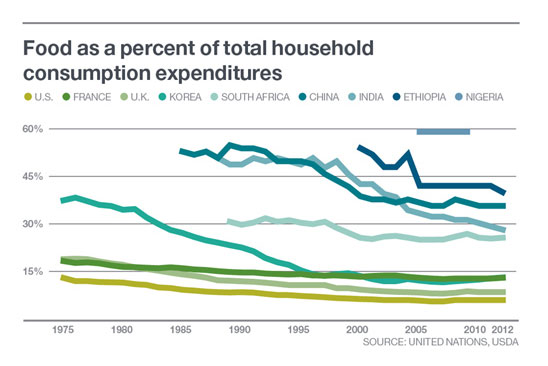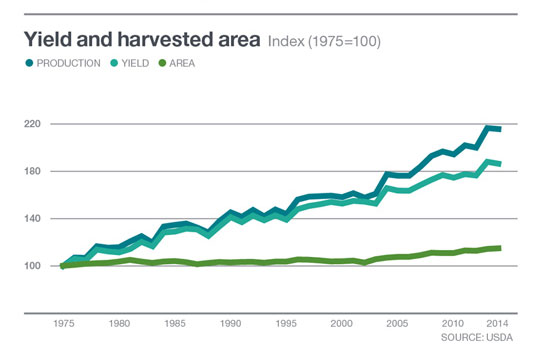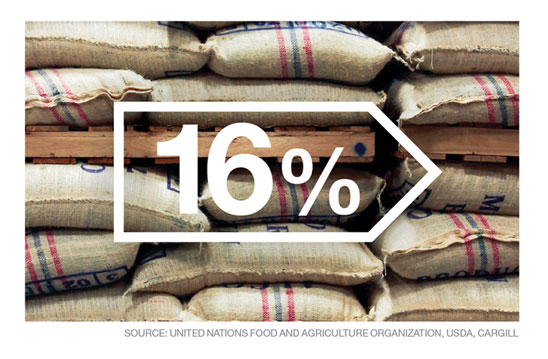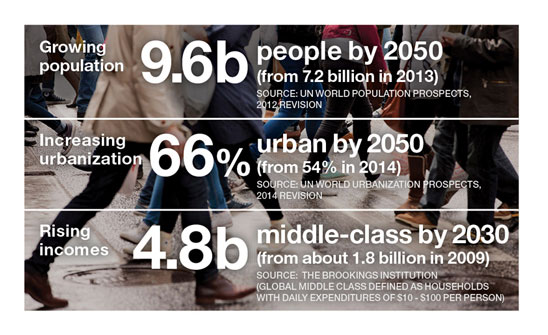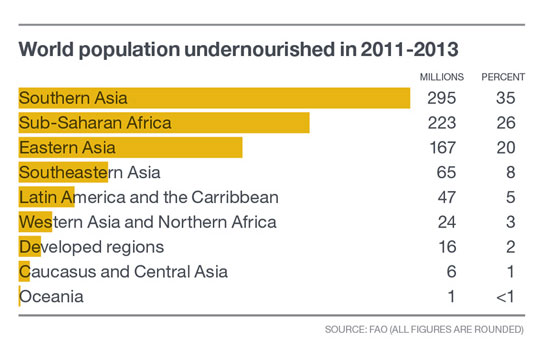Seven global trends in food security
September 02, 2014
It’s a question that’s being asked more and more: Will the world be able to feed itself in the future?
By 2050, the planet is expected to have about 9 billion people, many of whom will live in cities far from where food is grown. We will need a global food system that can feed all of them in a sustainable way.
The accomplishments of the food system to date should give us hope that we can build the system we’ll need, where everyone has access to safe, nutritious, affordable food.
On World Food Day, we offer these large trends, which outline what’s been achieved so far and the challenges still before us.
1. Food is more plentiful.
Production of the 16 crops that form the building blocks of the global food system has more than doubled since 1975, delivering enough calories to outpace the rise in consumption
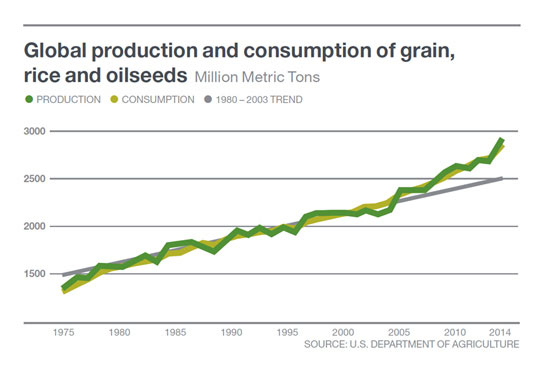
2. Food is more affordable.
As countries and the global food system have developed, spending on food as a share of total household consumption expenditures has declined markedly in many countries.
3. Land used for crops is more productive.
The system has met rising demand by increasing yields. How? Through improved plant genetics (both conventionally bred and genetically engineered) and more intense use of fertilizer. This has been achieved without taking much new land into production.
4. Food flows to meet demand.
Only about 16 percent of the world’s food production crosses borders, but this is a vital link in times of local production shortfalls or for countries without abundant agricultural resources.
5. Demand is increasing.
The world’s need for agricultural production (for food, feed and fuel) will continue to grow along with increasing population, urbanization and incomes.
6. Hunger persists.
Despite progress, more than 800 million people (or about one in eight around the world) suffer from chronic hunger, not having enough food regularly for an active and healthy life.
7. More efficiency and resiliency are required.
As we move forward, the global food system will need to deliver more calories and better nutrition at even higher levels of efficiency. It will need to do this while conserving land, water and energy resources, and adapting to a changing climate.

You can read more about these and other facts, as well as Cargill’s role in the global food system, in our 2014 Annual Report.
Also, check out our 2014 Corporate Responsibility Report for stories and statistics of how Cargill operates responsible supply chains, enriches communities, conducts business with integrity and works to feed the world.
And visit the new Food Secure World site for the latest articles, interviews and statistics about food security.

